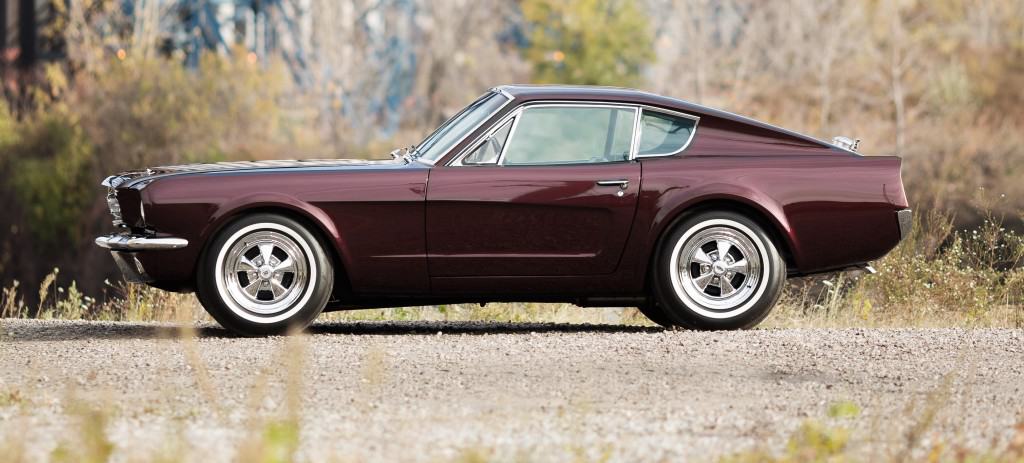We are still months away from March, 2015, but Auctions America is starting to beat the drums for its annual sale at Fort Lauderdale, Florida, where it will offer up the “Shorty” Ford Mustang concept car for bidding.
Back when it was developing the Mustang, Ford did a series of concept versions, starting with the original two-seat prototype with its Ford of Germany V4 engine mounted behind the cockpit. Dan Gurney unveiled that car to the world while driving around the Watkins Glen race track during pre-race activities for the 1963 U.S. Grand Prix.
Needing more room in the passenger compartment, another Mustang concept — the “XT-Bird,” was built on a shortened Ford Falcon chassis with modified 1957 Ford Thunderbird bodywork. The car had two child-sized rear jump seats.
But Lee Iacocca was convinced Ford’s pony car needed seating for four adults and that led to the Mustang II concept, which looks much like the actual 1964 1/2 Mustang production car, except for front fenders much like those of the 1963 “bullet ‘bird” Thunderbird.
Work on that Mustang II concept, a four-seat convertible, was done at Dearborn Steel Tubing Co., a prototype shop, where Vince Gardner was chief designer. Gardner, a native of South Bend, Indiana, won the General Motors Fisher Body Craftsman Guild competition for high school students and been hired by Gordon Buehrig at Auburn-Cord-Duisenberg.
He later worked at Briggs and Budd, major Detroit suppliers, before becoming part of the “Loewy Gang,” industrial designer Raymond Loewy’s studio that included Bob Bourke, Virgil Exner and others. Gardner did Studebaker designs for several years before opening his own studio.
Gardner turned a 1947 Studebaker Champion into the Gardner Special, which won National Roadster Show honors. He was one of the competitors on the design competition for William Clay Ford’s 1956 Continental MK II.
In 1963 he joined Dearborn Steel Tubing, which was commissioned by Ford to do what amounted to the Mustang III concept, a Gardner-designed two-seat Mustang fastback built over a prototype Mustang chassis that had been shortened by 16 inches. A custom-created 302-cubic-inch V8 engine topped by a trio of two-barrel carburetors was beneath the car’s hood.
When so-called Shorty Mustang was unveiled as part of a traveling custom car show, “Sports Cars in Review,” at the Henry Ford Museum in 1965.
“Much to the disappointment of showgoers and its designer, Ford’s plans for limited production of the model did not pan out; and, upset at the prototype’s pending destruction; Gardner stashed it away in a nearby warehouse,” Auctions America reports in its news release about the consignment.
“It was subsequently reported stolen by Ford, who received a payout for the loss, only for the car to be discovered several months later.
“An important piece of Ford history, it eventually found its way into the possession of its current owner… in 1968. He later commissioned a complete restoration to return the car to its original condition before debuting the vehicle at the esteemed Amelia Island Concours d’Elegance in 2013. The appearance marked the first time that the car had been shown publicly in four decades. More recently, it has been displayed at numerous events across the U.S. as part of Mustang’s 50th anniversary celebrations.”
Auctions America says “Shorty” will be joined by some 500 other classic and collector cars at the Fort Lauderdale sale.







Just a little reminder: The 302 engine didn’t come until years later. This would have had a 260. They could be bored out, but not to 302, maybe 289. This was not the original engine.
Don Hotton, Andy’s son, remembers this car well, also.
It was the Ford/ Saab V4 engine in the prototype not the 260/289